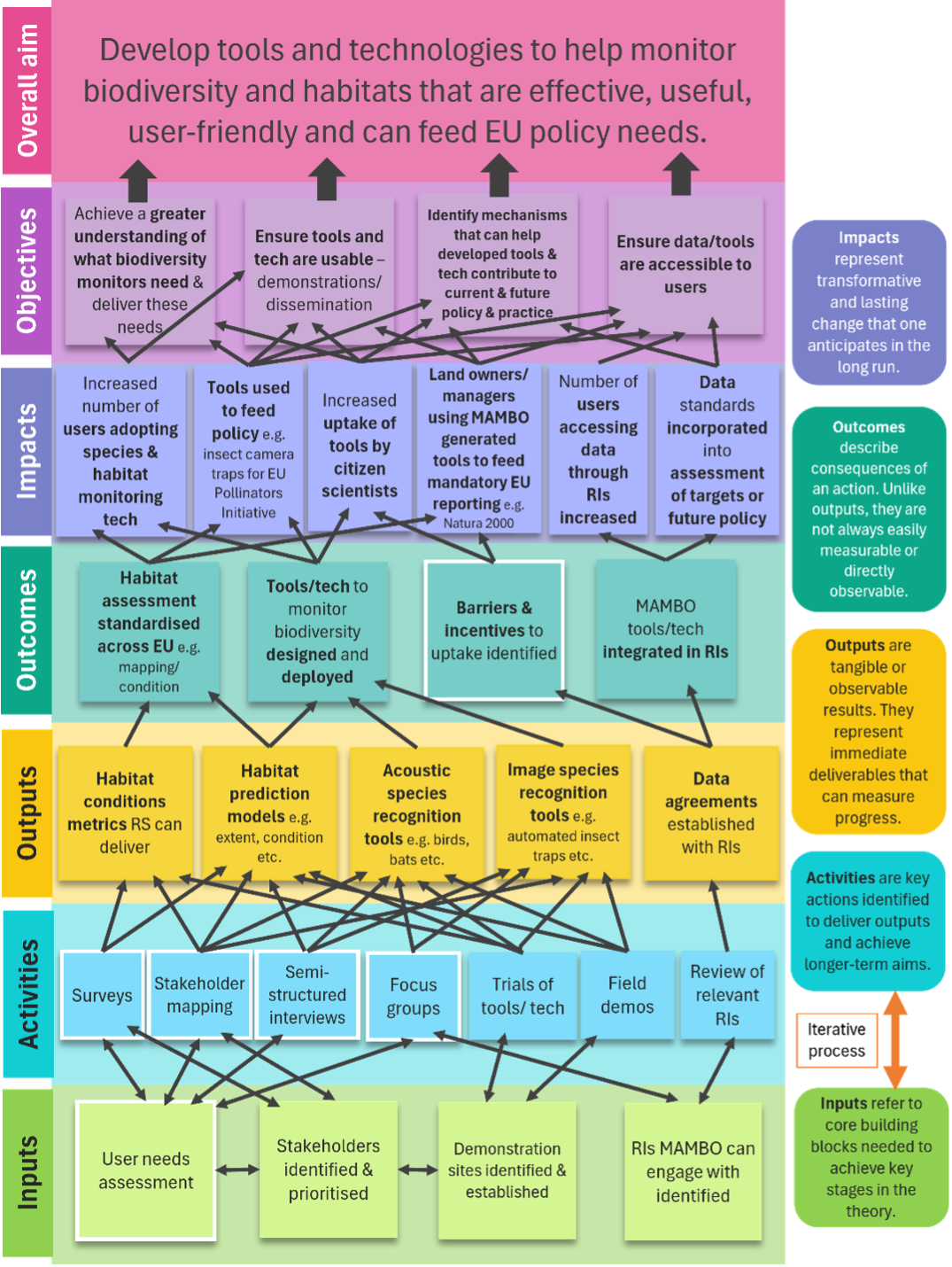Insights from the conducted survey on biodiversity and habitat monitoring needs
Over the summer, MAMBO partners from the University of Reading conducted an extensive online survey involving biodiversity monitors to gain insights into current monitoring practices, the adoption of innovative tools and technologies, and an exploration of challenges and incentives influencing the uptake of such innovations. They received responses from 119 participants spanning 54 countries globally, representing a diverse array of species and habitat monitoring initiatives.
 Map showing geographic coverage of participants, colour-coded by the number of participants representing each country. Inset map shows coverage of European participants, with a colour ramp to represent the number of respondents from each country.
Map showing geographic coverage of participants, colour-coded by the number of participants representing each country. Inset map shows coverage of European participants, with a colour ramp to represent the number of respondents from each country.
This included a Theory of Change (ToC) identifying pathways to achieving MAMBO’s overarching goal developing tools and technologies to help monitor biodiversity and habitats that are effective, useful, user-friendly and that can feed EU policy needs with specific focus on how stakeholder engagement activities can contribute to this. This ToC was not designed to be a prescriptive or an exhaustive list of MAMBO tasks and outputs, but rather an overarching framework for four main workstreams; (i) habitat assessments (conditions and extent), (ii) species monitoring (acoustic and image-based), (iii) data use and availability (through integration to relevant research infrastructures (RIs) and (iv) the underlying stakeholder engagement and co-design elements that are required to deliver on the first three workstreams.
 A theory of change to outline the steps necessary to achieve MAMBO’s overarching aim of developing tools and technologies to help monitor biodiversity and habitats that are effective, useful, user-friendly and which can ultimately feed EU policy needs. Links are identified to signify pathways. Components of the ToC are organised under inputs, activities, outputs, outcomes, impacts, objectives and an overall aim, which are defined to the right hand side of the figure.
A theory of change to outline the steps necessary to achieve MAMBO’s overarching aim of developing tools and technologies to help monitor biodiversity and habitats that are effective, useful, user-friendly and which can ultimately feed EU policy needs. Links are identified to signify pathways. Components of the ToC are organised under inputs, activities, outputs, outcomes, impacts, objectives and an overall aim, which are defined to the right hand side of the figure.
From all of the extensive stakeholder engagement efforts thus far, several key messages have emerged:
1. Consider the type and expertise of the monitor involved – stakeholders from different sectors have different abilities to adopt novel tools and technologies. Our survey also revealed that incentives and challenges also vary depending on the type of biodiversity to be monitored.
2. Barriers to uptake vary amongst stakeholders – financial reasons are the most important challenge for adopting novel tools and technologies. Time-investment to learn and implement new tools, insufficient reliability and quality of data (in terms of geographic coverage, and taxonomic resolution), and a lack of awareness are also as important barriers to adoption for some monitors.
3. Free to access novel tools and technologies is preferred – a general exception to this are molecular methods which monitors expect and are willing to pay for. Species monitors are more likely to pay upfront for monitoring equipment such as acoustic- and camera- systems, but payment preferences varied between monitor types and across technologies.
4. Training by experts is required – stakeholders may require support for the analyses of data produced by modern monitoring tools and technology.
5. Ownership is critical – to ensure uptake and continued use of novel tools and technologies increasing users’ ownership is important.
6. Communication is key – stakeholders are often unaware what is available, or possible to achieve using novel tools and technologies, often leading to disappointment and disillusion with modern monitoring techniques. Open communication and clear guidance is needed. Contact with developers at certain times during development is important to increase the uptake of novel tools and technologies.